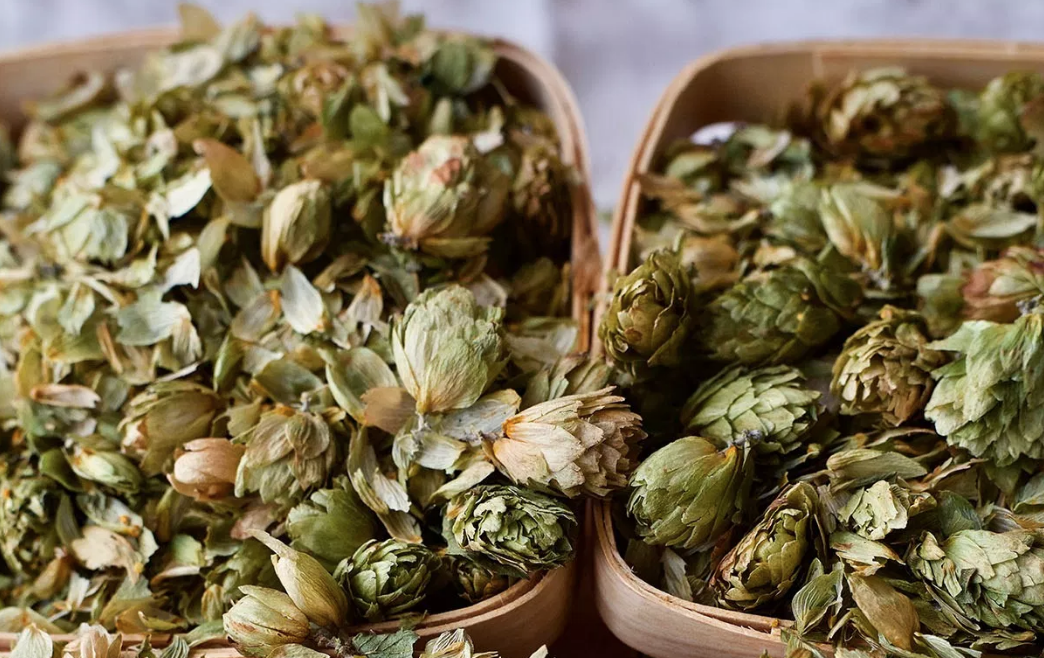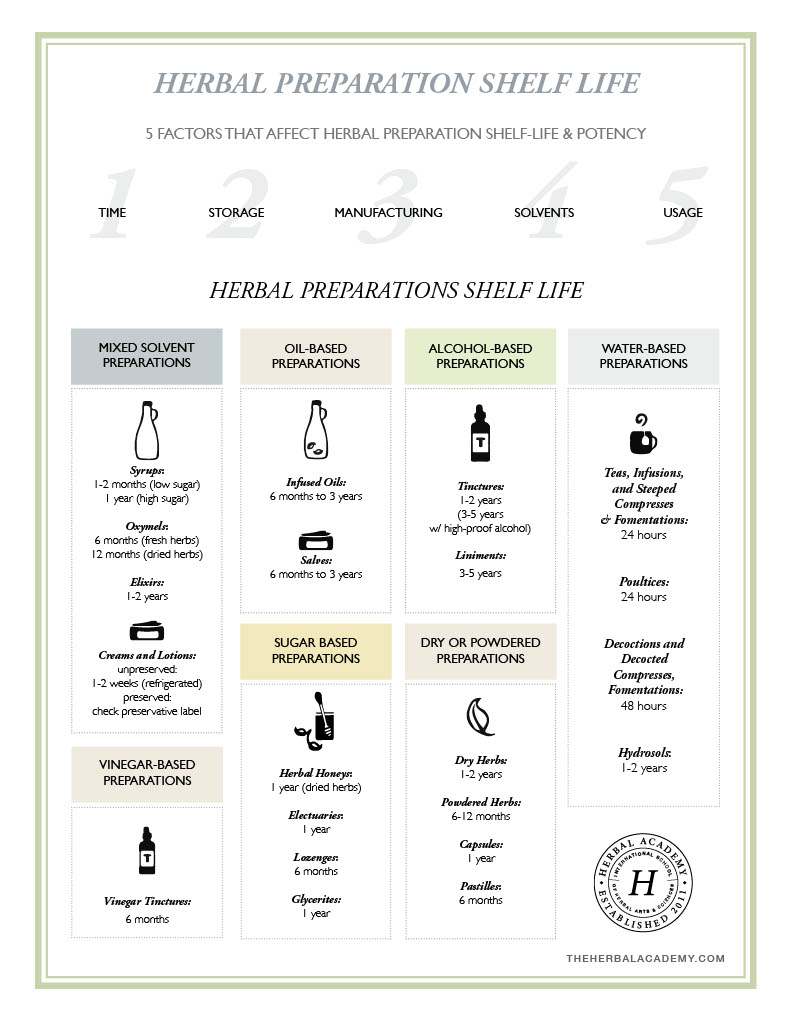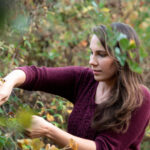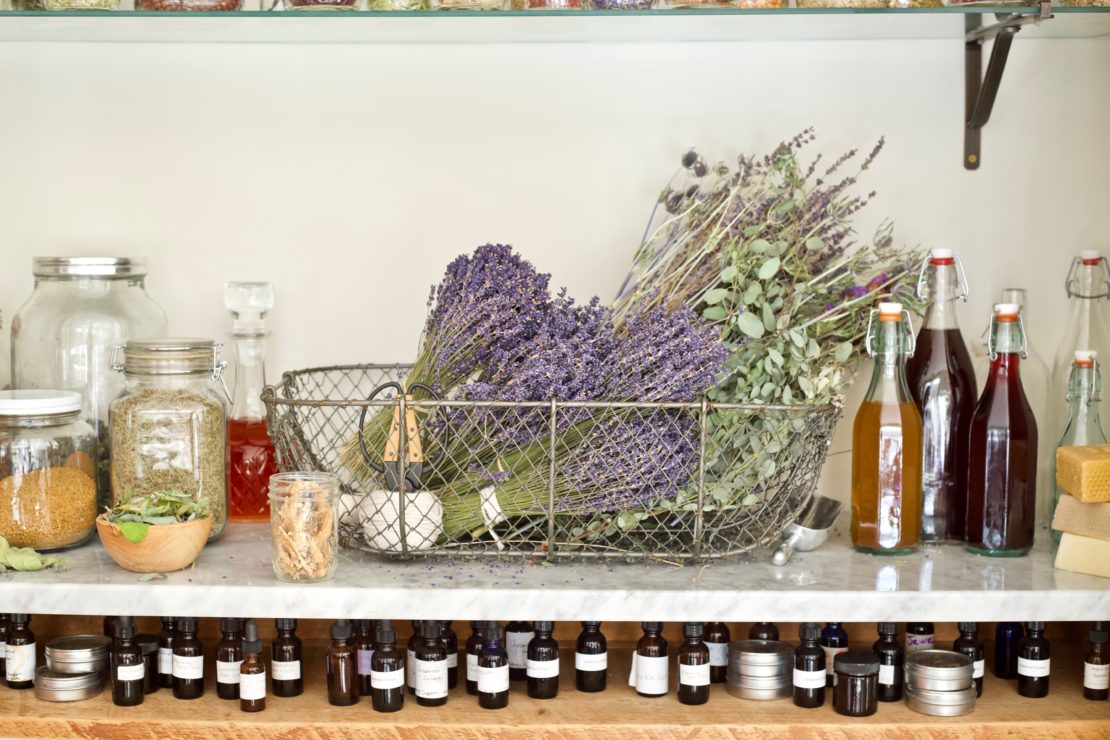
What Every Herbalist Should Know About Herbal Preparation Shelf Life
Have you ever pulled an older herbal salve out of your bathroom cabinet and wondered if it was still effective? Or perhaps you’ve thought about making a large batch of herbal tea to store in the refrigerator and drink over the course of several days, later second guessing yourself because you weren’t sure how many days the tea would remain drinkable. What about the hydrosol that’s been sitting in the back of your refrigerator that now has a little white cloud floating in the bottom of it?
Questions about herbal preparation shelf-life are common, and while shelf-life and preparation potency will vary based on several factors such as the solvent used to make the preparation, how the preparation is made, stored, and used, and time itself, having a guideline can be helpful, especially if you’re new to making herbal preparations.
In this post we’re sharing some basic guidelines on herbal preparation shelf-life. We’ve even made a free printable for you so you can have these guidelines handy in one place. Feel free to download, print, and store this chart in your herbal journal or on the inside of your bathroom cabinet (or wherever you store the majority of your herbal preparations) so you can easily reference it the next time you have a question about herbal preparation shelf-life!
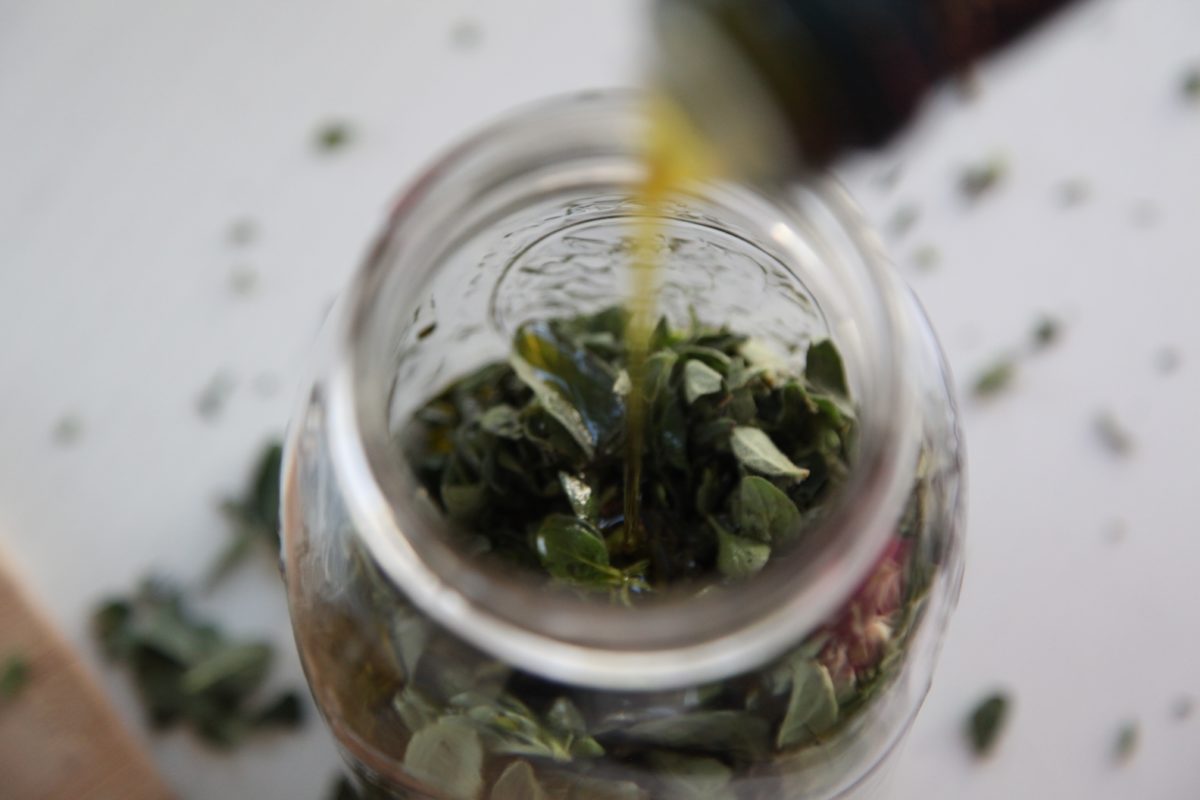
How Solvents Affect Herbal Preparation Shelf Life
Solvents are the menstruums used to extract the properties of herbs. Oil, alcohol, water, glycerin, vinegar, and honey are all examples of commonly used solvents. All solvents have a recommended shelf life, and these recommendations determine the starting point of the shelf life of your herbal preparation. The shelf life of substances all vary based on how long it takes for microbes to grow in them, or in the case of oil, how long it takes for oxidation (rancidity) to occur. We’ll discuss the shelf life of some common herbal solvents below.
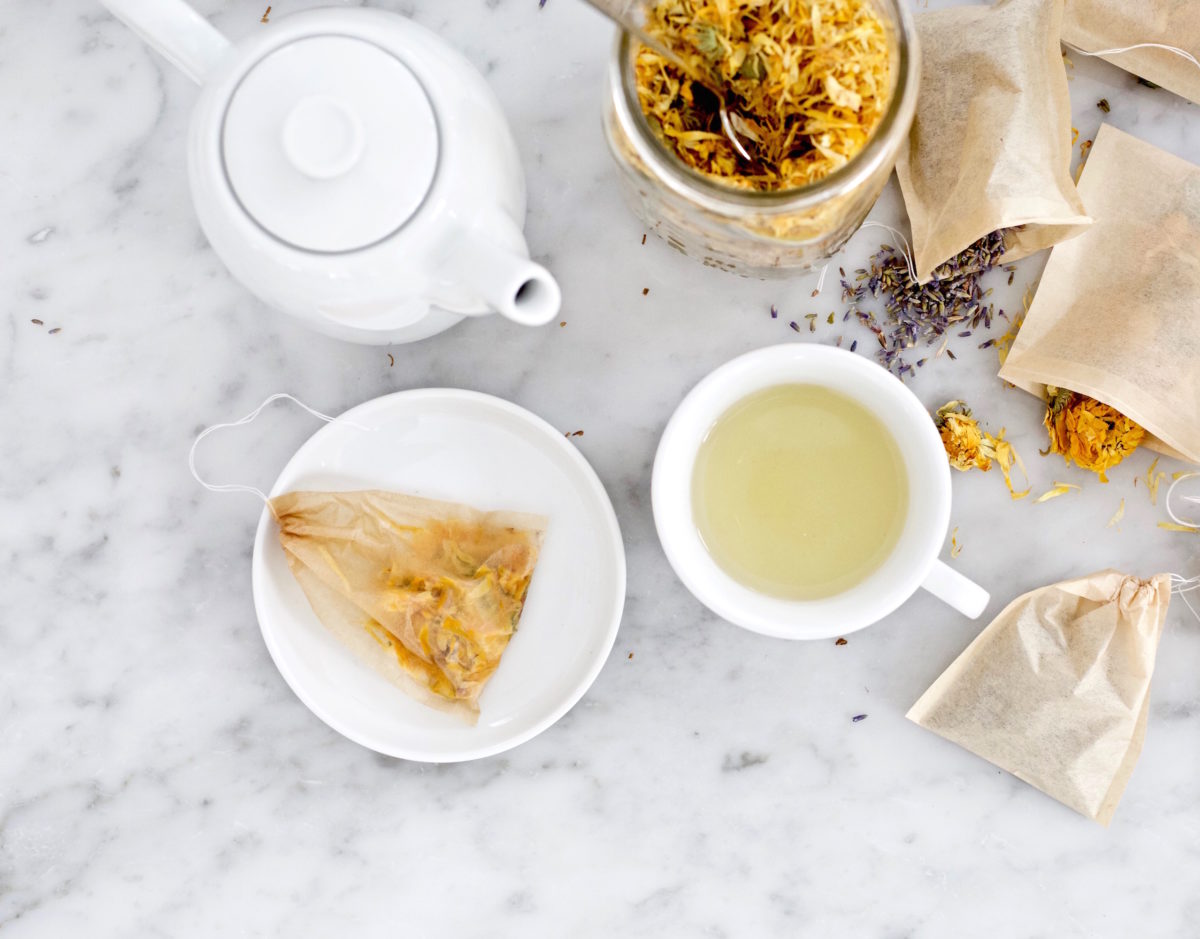
Water-Based Preparations
Water-based herbal preparations are those that are comprised mostly of water. While teas, infusions, and decoctions may be the first preparations that come to mind, compresses, fomentations, hydrosols, and poultices fall into this category as well.
Because microbes multiply in water rather quickly, it’s recommended to use water-based preparations almost immediately. Refrigeration and freezing can help to extend shelf life of these herbal preparations.
We recommend using poultices and refrigerated herbal teas and infusions within 24 hours and refrigerated decoctions within 48 hours. Steeped herbal compresses and fomentations have a shelf life of 24 hours; however, those that are decocted can be refrigerated for 48 hours. Steam-distilled hydrosols are believed to have a shelf life of 12-24 months (Jacobson, 2015) depending on the botanical used, its pH, and distillation and storage conditions (Robbins, n.d.).
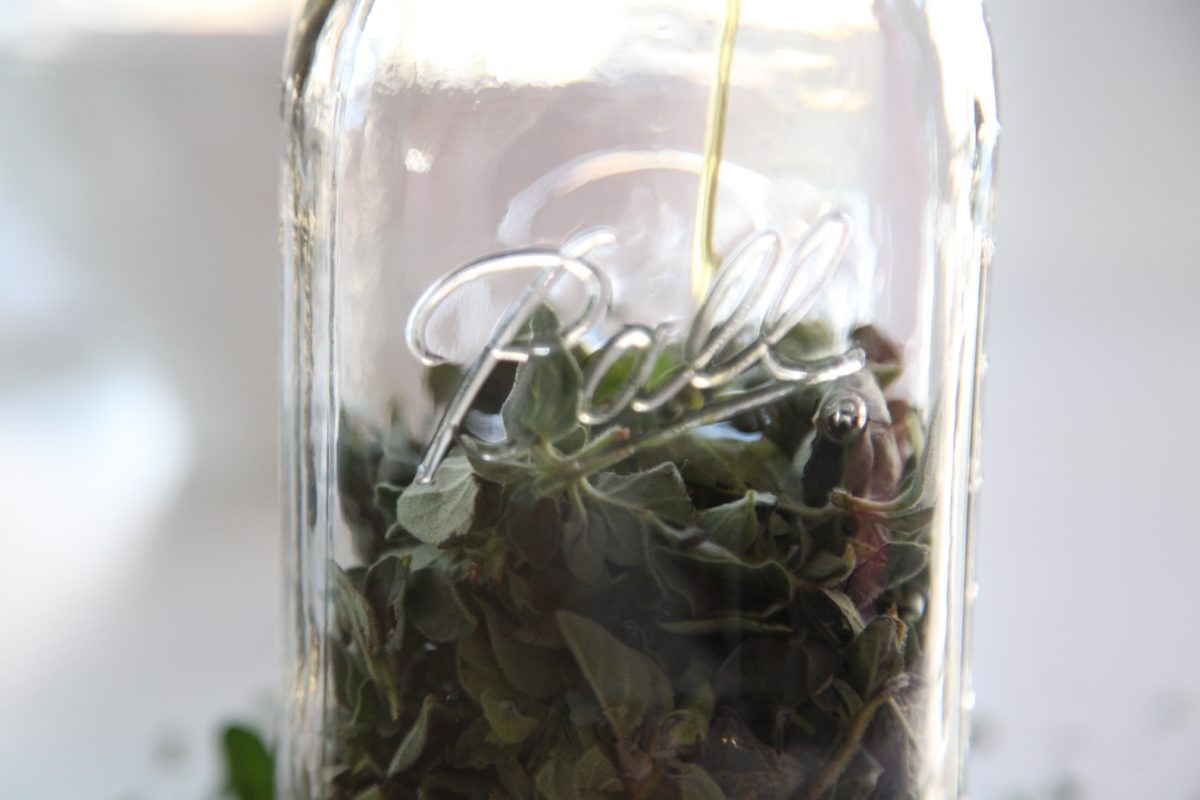
Oil-Based Preparations
Oil-based herbal preparations are those that are comprised mostly of lipids, such as herbal salves and infused oils.
While microbes can multiply in oil once contaminated, microbes are not the main threat to the shelf life of oil-based herbal preparations — it’s oxidation (rancidity). Oil rancidity naturally occurs with time, and can also occur due to improper storage and usage. We’ll discuss these three factors that affect herbal preparation shelf life later in this article. Water is another substance that can impact the shelf life of herbal infused oils as it can lead to microbe growth within your oil. While this is normally not an issue if dry herbs are used, it is a concern for herbal oil infusions made with fresh herbs.
The shelf life of oil-based preparations made with dried herbs varies greatly depending on the oil you choose, therefore, herbal infused oils and salves have a shelf life that ranges from 6 months to 3 years. For infused oils that oxidize easily, you can add antioxidant products like vitamin E and rosemary oil extract to help extend shelf life a little longer as these products have been shown to slow the process of oxidation (Riaz & Rokey, 2012).
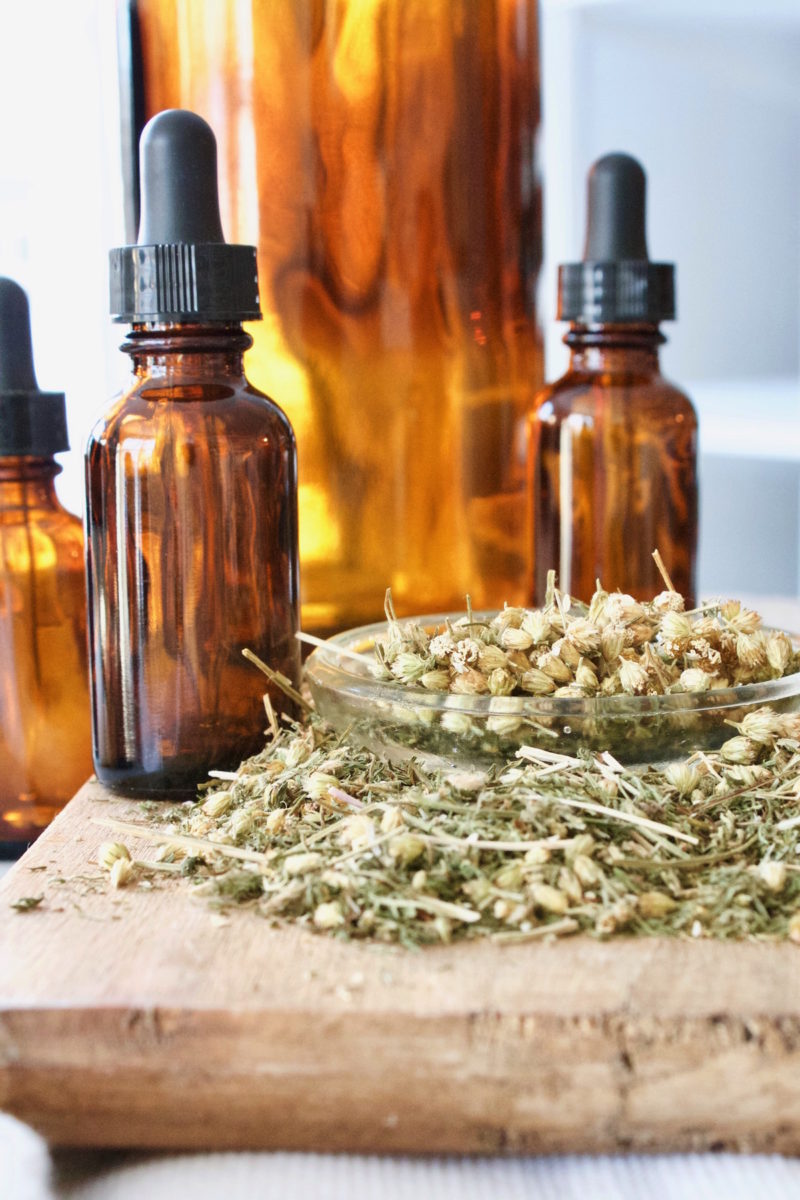
Alcohol-Based Preparations
Alcohol-based herbal preparations are those that use some form of alcohol as the solvent. Herbal tinctures and herbal liniments are both considered alcohol-based preparations even though two different types of alcohol are used (ethyl alcohol and isopropyl alcohol, respectively).
Alcohol preparations have a long shelf life as alcohol slows decomposition of materials (Green, 2000) and bacterial growth, thus, increasing herbal preparation shelf life, but for alcohol to properly preserve a tincture, the final alcohol percentage should be at least 25%. Herbal tinctures and liniments made using the appropriate amount of alcohol are shelf-stable and do not need to be refrigerated.
We recommend using alcohol-based herbal tinctures within two years. However, some alcohol tinctures and liniments have a shelf life of 3-5 years, particularly those made with a high percentage of alcohol. Shelf life can be extended with proper storage and usage as well as by thoroughly filtering the tincture to remove as much plant sediment as possible (Green, 2000).
Vinegar-Based Preparations
Vinegar-based herbal preparations are those that use vinegar as a solvent. Herbal vinegar tinctures are preparations that fit into this category.
Vinegar has long been used as a food preservative and natural household cleaner due to its acidity, which inhibits the growth of certain bacteria (Entani, Asai, Tsujihata, Tsukamoto, & Ohta, 1998; Rutala, Barbee, Aguiar, Sobsey, & Weber, 2000).
We recommend using vinegar-based herbal preparations within six months. Vinegar preparations in general are shelf-stable when made with no less than 5% vinegar (Cech, 2000; Green, 2000) and do not need to be refrigerated, although, refrigeration can help extend shelf life. Like alcohol tinctures, vinegar tincture shelf life can also be extended by thoroughly filtering plant sediment from the liquid.
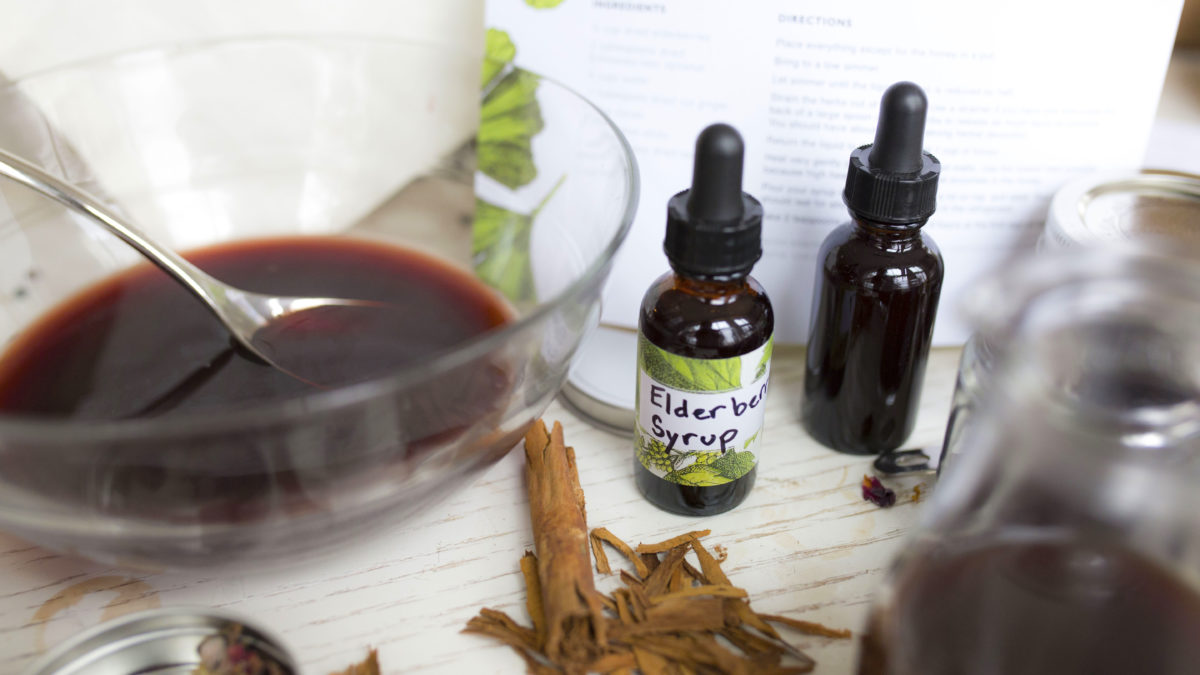
Sugar-Based Preparations
Sugar-based herbal preparations are those that are made with some form of sugar, whether that be cane sugar, honey, or maple syrup. Herbal honeys, electuaries, and lozenges are all examples of sugar-based preparations.
Sugar has been used for many years as a food preservative. Like alcohol, sugar inhibits bacterial growth through its osmotic effect of drawing water out of the cells of foods and microorganisms so that microorganisms can no longer survive; the higher the sugar concentration, the better its preservative effects (ACS Distance Education, n.d.).
Herbal honey made with dried herbs has a shelf life of one year, is shelf-stable, and will not require refrigeration. Electuaries, because they use powdered herbs, have a shelf life of 6-12 months when refrigerated and used properly. We recommend using herbal lozenges within six months when stored properly.
Glycerin, while sweet, is not a true sugar, but we’re including glycerites in this section based on taste alone. Herbal glycerites are shelf-stable, do not require refrigeration, and have a shelf life of one year when they contain at least 55% glycerin (Cech, 2000).
Dry or Powdered Preparations
Dry or powdered preparations are those that utilize dried or powdered herbs in the majority of the product. Loose powdered herbs, capsules, and pastilles are examples of herbal preparations that fall into this category.
Under appropriate storage conditions, dried herbs can retain their potency for 1-2 years. However, once an herb is powdered, the properties begin to degrade at an even faster rate, cutting shelf life in half (Kress, 1997). For this reason, we recommend using powdered herbs within 6-12 months. Proper storage and refrigerating or even freezing powdered herbs can help to extend herbal preparation shelf life by a couple of months.
Capsules have a one-year shelf life when stored properly. We recommend using refrigerated pastilles within six months.
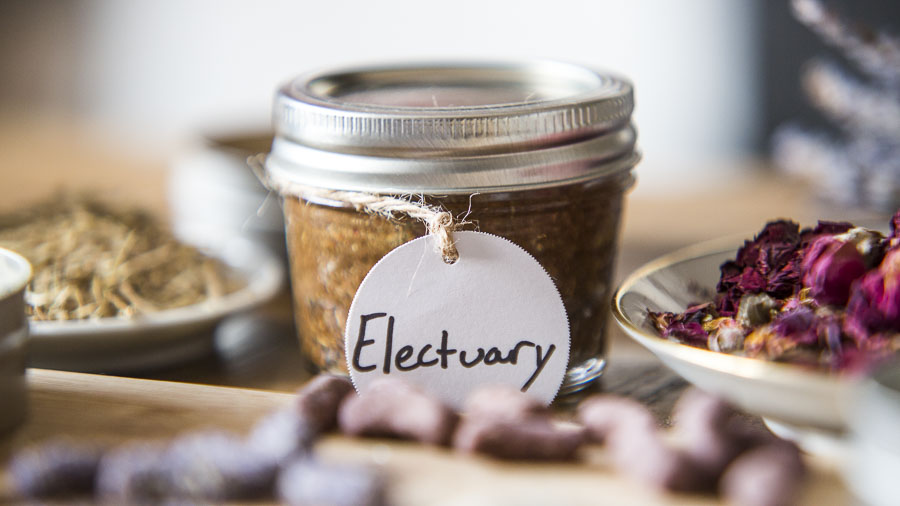
Mixed-Solvent Preparations
Mixed-solvent preparations are those that contain two or more types of solvents. Herbal syrups (water and honey), creams and lotions (oil and water), oxymels (honey and vinegar), and elixirs (alcohol and honey) are some preparations that fit into this category.
When creating preparations with mixed solvents, it’s important to know the recommended shelf life of each solvent and to estimate your preparation’s shelf life based on that information.
When it comes to herbal syrups, plan on using refrigerated 2:1 (decoction:sugar) syrups within several weeks (Gladstar, 2012), while a refrigerated 1:2 syrup can remain shelf-stable for up to a year (Cech, 2000). Oxymels should be refrigerated and used within six months when made with fresh plant material (Andress & Harrison, 2000); however, when made with dried material, they are shelf-stable and should be used within 1 year. Elixirs can remain shelf-stable for 1-2 years. Creams and lotions, when refrigerated, will have a shelf life of 1-2 weeks unless some form of preservative is added (Berry, 2016).
How Manufacturing Affects Herbal Preparation Shelf Life
Don’t let the word manufacturing confuse you into thinking this section is only for herbal businesses who sell their products to the public. It isn’t! This information also applies to home herbalists who make products to use with their families or give them away to friends.
When making herbal preparations, you want to be mindful that you are working in a clean environment and with clean materials. The cleaner your hands, surfaces, and utensils are, the less chance for bacterial contamination of your herbal preparation. Using dry herbs as opposed to fresh herbs can help decrease the chance of bacterial growth due to the presence of water in fresh plant material. Avoiding overheating of herbal preparations, particularly herbal infused oils, can increase the chance of oxidation. Also, when storing any liquid preparation for an extended period of time, shelf life can be extended by straining the liquid through a coffee filter several times to thoroughly remove plant sediment (Green, 2000).
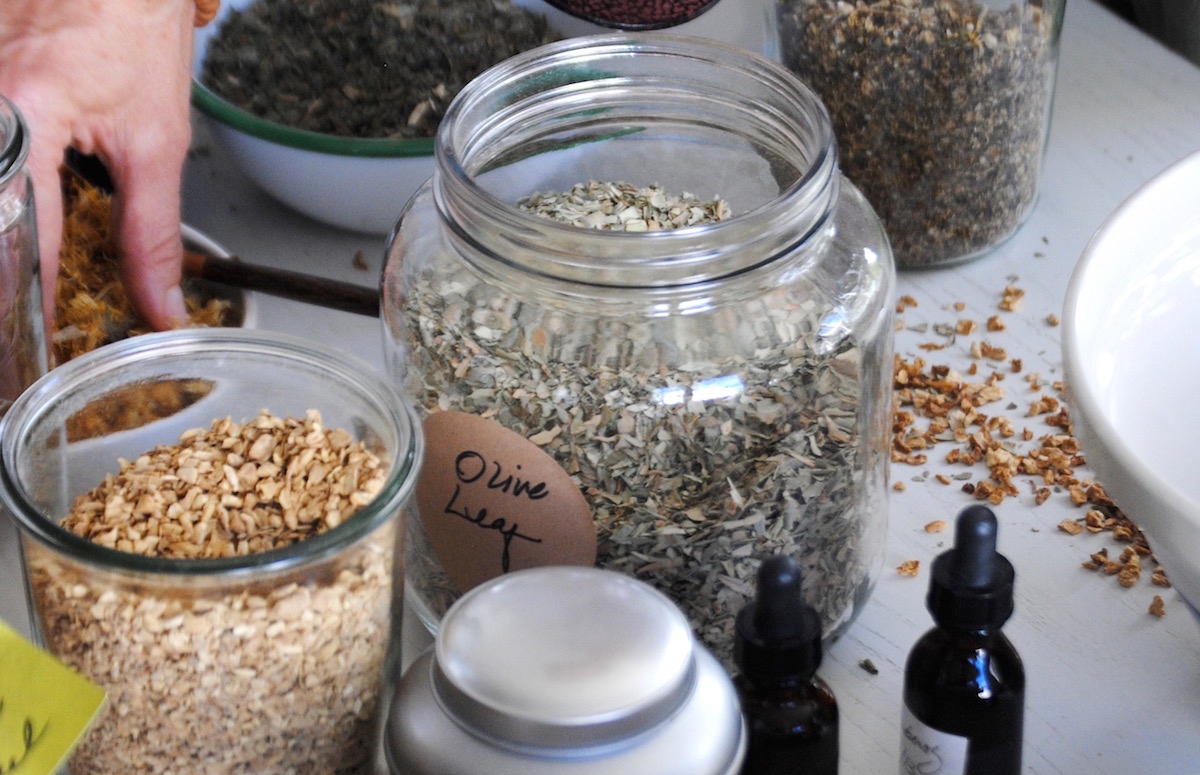
How Storage Affects Herbal Preparation Shelf Life
Storage also affects herbal preparation shelf life in regards to the effectiveness of the preparation. Like herbs, herbal preparations should be stored out of direct sunlight, in a dry place free from moisture, and in a cool environment (not above 110 degrees) as light, moisture, and heat are all thought to reduce the effectiveness of the herbal properties contained in the preparation.
Refrigeration (below 40° Fahrenheit) can also help to extend the shelf life of herbal products as bacteria grow more slowly in cold environments (United States Department of Agriculture, n.d.).
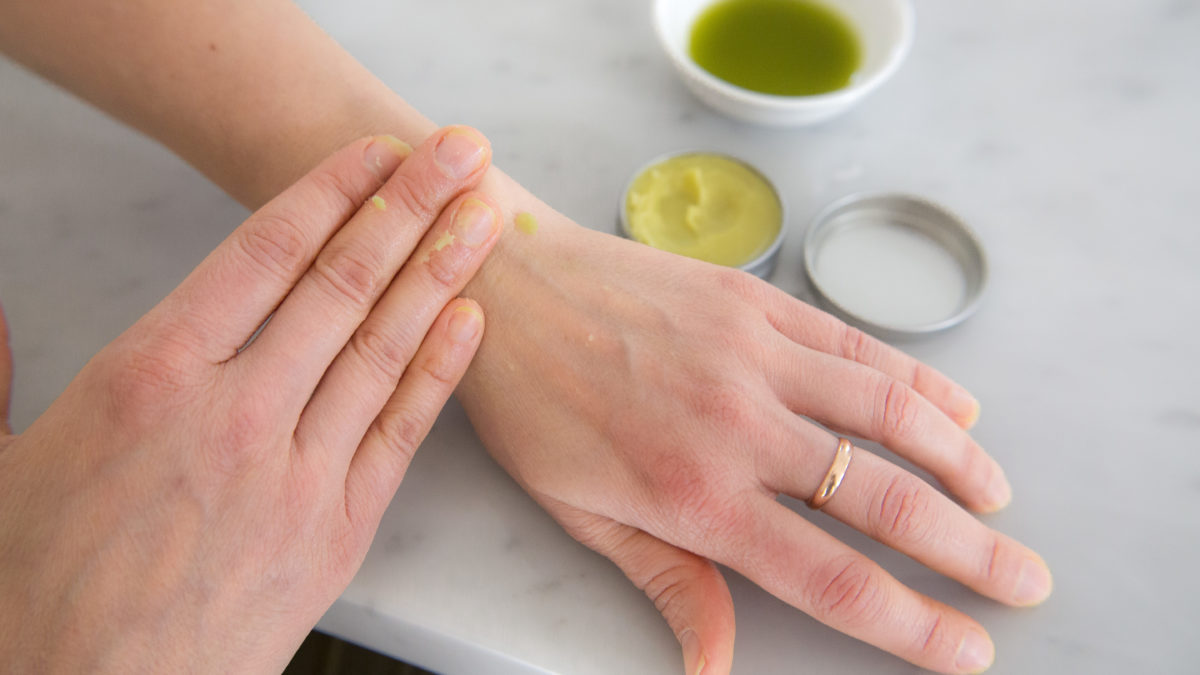
How Usage Affects Herbal Preparation Shelf Life
How an herbal preparation is used day in and day out will also be a determining factor when considering shelf life. The cleaner you can keep the preparation by minimizing the chance of microbial contamination, the longer the shelf life will be. For example, using your finger to scoop salve out of a tin is less sanitary than using a cotton swab, and dropping drops of tincture directly into your mouth is less sanitary than adding drops of a tincture into a small amount of water to drink.
How Time Affects Herbal Preparation Potency
Time affects all herbal preparations in terms of potency and effectiveness. The more time that passes, the less potent the preparation becomes. As soon as a plant is harvested, it and its properties begin to fade. Solvents can help extract and preserve a plant’s properties for a time, but effectiveness naturally wanes as time passes.

Use Your Senses To Tell When An Herbal Preparation Has Gone Bad
In this post and in the printable below, we’ve tried to be conservative with our recommendations for herbal preparation shelf life. However, there is wiggle room when it comes to the shelf life of various herbal preparations. Using your five senses can help guide you as to whether something has gone bad.
Think back to how your preparation looked, smelled, tasted, or felt when you first made it. Compare that to how it looks, smells, tastes, or feels now.
Does it look different from when you first made it? Has the color changed? Do you see cloudy matter floating in the liquid? Is there mold growing on the surface?
Does it smell different? Most freshly made herbal preparations will have an herby scent, smelling similar to the herb itself, or a scent reflecting the solvent used (tinctures smelling like alcohol, oxymels smelling like vinegar).
Does it taste strange? Perhaps a little sour, fizzy, or alcoholic when it was once sweet or savory?
Does it feel different? Is it gooey or slimy feeling? Has it gone from smooth to grainy?
Using your senses can help you to guess whether an herbal preparation is past its prime and should be remade. Remember to err on the side of caution, and don’t forget to label your preparations!

Guidelines Are Just That
Remember, guidelines are not a set of hard rules to follow. They’re suggestions, and like we mentioned earlier, our suggested guidelines err on the side of safety.
The more you make and use herbal preparations, the more confident and comfortable you’ll become with the process. In fact, you’ll most likely develop your own system for making preparations. This system will help you to keep track of when your preparations are past their prime and ready to be replaced whether that’s through tracking dates, using your senses, or your own intuition.
Download Our Free Herbal Preparation Shelf Life Graphic Below
If you’ve enjoyed the information in this post and would like to keep it in an easy to recall format, we’d love for you to download this free printable below.
Learn More About Herbal Preparations!
Herbal preparations at the heart of the way many herbalist work with herbs, and there is so much to learn and explore in this beautiful art and science. Hands-on experimentation is one of the best ways to learn about herbal preparations! We provide helpful guidance to help you learn the ins and outs of making a variety of preparations, from tinctures to salves to syrups and more, in many of our courses.
Click here for information on all our courses!

REFERENCES:
Andress, E.L., & Harrison, J.A. (2000). Preserving food: Flavoring vinegars. [PDF]. Retrieved from https://nchfp.uga.edu/publications/uga/uga_flavored_vinegars.pdf
ASC Distance Education. (n.d.). Sugar in food preservation. [Online article]. Retrieved from https://www.acsedu.co.uk/Info/Alternative-Living/Self-Sufficiency/Sugar-in-Food-Preserving.aspx
Berry, J. (2016). 101 easy homemade products for your skin, health & home. Salem, MA: Page Street Publishing Co.
Cech, R. (2000). Making plant medicine. Williams, OR: Horizon Herbs.
Entani, E., Asai, M., Tsujihata, S., Tsukamoto, Y., & Ohta, M. (1998). Antibacterial action of vinegar against food-borne pathogenic bacteria including Escherichia coli O157:H7. Journal of Food Protection, 61(8), 953-959. doi:10.4315/0362-028x-61.8.953
Gladstar, R. (2012). Rosemary Gladstar’s medicinal herbs. North Adams, MA: Story Publishing.
Green, J. (2000). The herbal medicine-maker’s handbook: A home manual. New York, NY: Random House.
Jacobson, L. (2015). Hydrosols, hydrolats, aromatic waters – oh my! Everything you wanted to know about hydrosols. [Online article]. Retrieved from http://www.usingeossafely.com/hydrosols-hydrolats-aromatic-waters-oh-my-everything-you-wanted-to-know-about-hydrosols/
Kress, H. (1997). Shelf life of dried plants. [Web page]. Retrieved from https://www.henriettes-herb.com/archives/best/1997/shelf-life.html
Riaz, M.N., & Rokey, G.J. (2012). Extrusion problems solved: Food, pet food and feed. Philadelphia, PA: Woodhead Publishing.
Rutala, W. A., Barbee, S. L., Aguiar, N. C., Sobsey, M. D., & Weber, D. J. (2000). Antimicrobial activity of home disinfectants and natural products against potential human pathogens. Infection Control & Hospital Epidemiology, 21(1), 33-38. doi:10.1086/501694
Robbins, W. (n.d.). Hydrosol shelf life and storage tips. [Online article]. Retrieved from https://www.aromaweb.com/hydrosols/hydrosol-storage-tips.asp
United States Department of Agriculture. (n.d.). Refrigeration and food safety. [PDF]. Retrieved from https://www.fsis.usda.gov/shared/PDF/Refrigeration_and_Food_Safety.pdf

